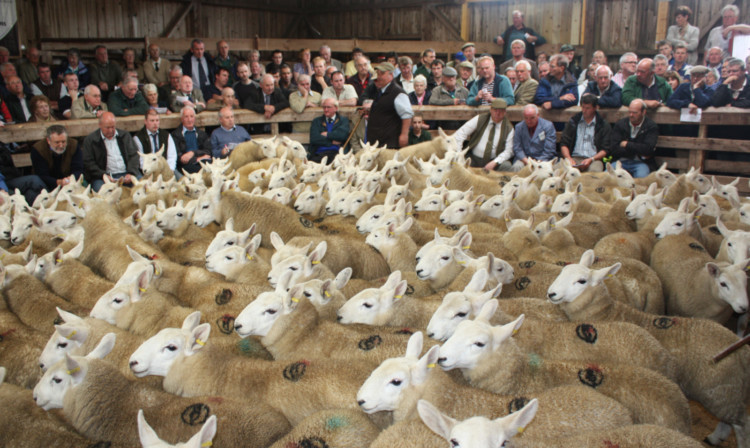Harold Wilson once ruefully declared that a week was a long time in politics. Now it seems that when it comes to agri-politics even a day is a long time.
On Monday, NFU Scotland president Nigel Miller was making proposals as to how coupled payments could be used to bolster the sheep sector.
By yesterday he was as shocked as everyone else to hear that they will be unavailable.
There was anger, too, across the industry that the news came from a meeting between EU Farm Commissioner Dacian Ciolos and Scottish Liberal Democrat MEP George Lyon rather than by an official announcement.
At a meeting with Commissioner Ciolos yesterday morning, Mr Lyon was told that EU rules do not allow for a higher rate of coupled payments because the UK has chosen to implement separate CAP arrangements in Scotland, England, Wales and Northern Ireland.
This reasoning is hard to understand because the flexibility offered by these different arrangements formed the very basis of Scotland’s request.
Coupled payments are essentially livestock headage payments and have never been popular with Defra Secretary Owen Paterson. He did reluctantly, however, agree that Scotland could use 8% of its CAP budget to fund a beef calf scheme.
No other part of the UK has plans to follow suit, but that didn’t stop the Scottish Government seeking permission to use an additional 5% of the budget to support the sheep sector through a ewe or lamb subsidy.
Cabinet Secretary Richard Lochhead, believed he had secured EU approval during a February meeting with Mr Ciolos, also attended by Defra Minister George Eustice.
Now it seems the plan is in tatters.
Mr Ciolos will attract his share of criticism for creating confusion. However, much of the political friction will inevitably come from nearer home, with the fiasco being used to fire up the independence referendum debate. Mr Lochhead will appear wronged, while the UK coalition will inevitably stand accused of gloating at his predicament.
Mr Lyon, commenting after his meeting yesterday with Mr Ciolos, said: “I am bitterly disappointed that the Commission is blocking Scotland borrowing some of the UK’s entitlement to coupled payments.
“This decision from the Commission seems to fly in the face of earlier indications to Scottish ministers in a discussion in the margins of the February Agriculture Council, where Commissioner Ciolos was reported to have said he thought it would be possible for this to happen.
“The announcement that the UK would be willing to continue lending some of its coupling entitlement was made back in early November 2013.”
He added: “It is hugely frustrating that the Scottish Government only woke up late in the day to the fact that it needed to engage with Brussels and clarify whether it was possible under the new rules.”
An obviously furious Mr Lochhead responded: “If true, this is absolutely astonishing and it speaks volumes that we’ve found out through a press release from a coalition MEP and have not had the courtesy of a direct response from his UK ministerial colleagues or from the European Commission.
“This outcome is a bitter blow to Scotland’s farmers but suits the UK Government and Owen Paterson, who has made clear he is against higher coupled support.”
He added: “On top of the outrageous and morally wrong refusal to pass on in full the 223 million euro convergence uplift that rightly belongs to Scottish farmers, this is a horrible double whammy for our hard-working industry.”
Nigel Miller added: “We are deeply disappointed over this sequence of events, where decisions apparently taken one day are revoked the next. We are totally exasperated by the inability of the EU Commission and our politicians to deliver what was a simple concept.
“During the early stages of negotiations, when Commissioner Ciolos visited Scotland, the ceiling for coupled support was high on the agenda. At that point, he indicated that negotiating this point was unnecessary as Scottish producers could make use of the UK ceiling.
“Clearly that message was reiterated to Defra Minister George Eustice and Cabinet Secretary Richard Lochhead in person in recent weeks.
“For that option to apparently be rolled back by Commissioner Ciolos at this late stage in the CAP reform process is beyond belief.”
George Milne, development manager of the NSA Scottish region, said: “Clearly this uncertainty is totally unsatisfactory for Scottish agriculture at this stage in CAP reform.
“Whether this is playing at referendum politics or simply a misunderstanding is not clear, but the outcome remains that farmers are being left to live with the consequences.
“We should have known about the rules long before the Scottish Government consultation closed earlier this week.”
Defra seemed to be prepared to wait for official written confirmation of the decision.
A spokesperson said: “Both the UK and Scottish Government are waiting for the European Commission’s response on voluntary coupled support in Scotland.
“There are potentially large financial risks if we act without this clarity from the Commission, so it is prudent to wait for their reply.”
